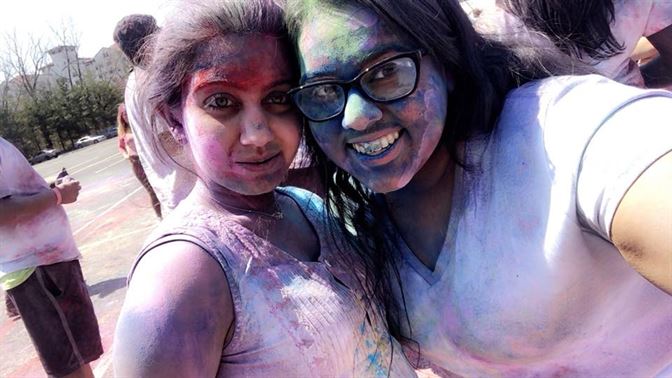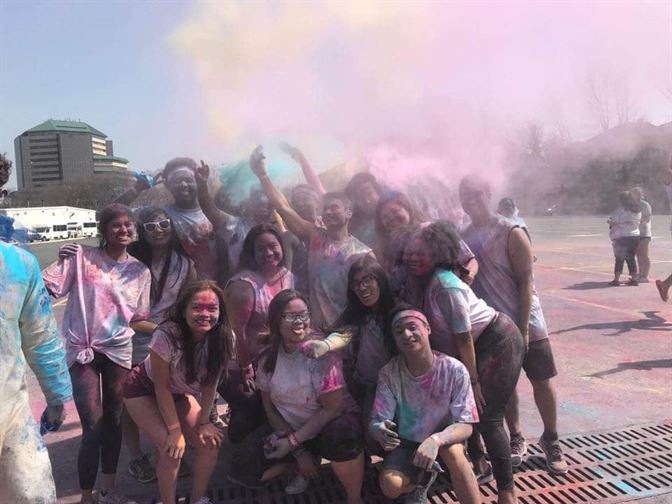In different areas of India and Nepal, there are Hindus who celebrate the festival Holi on the day after the full moon in early March, which is known as Phalguna or Purnima. It is celebrated on different dates every year in March.
Holi represents the festival of colors and happiness and signifies good over evil. The main purpose of the Holi festival is to welcome the beginning of spring, share compassion with others and to honor the Hindu god, Vishnu.
The South Asian Student Association (SASA) at Montclair State University plans to hold their third annual Holi celebration on Saturday, April 13 in Lot 45 starting at noon. The organization hopes to welcome the spring season and celebrate love and life by throwing colors in the air and enjoying cultural food, performances and other entertainment. Students with different religions and cultures on campus are welcome to attend and experience the traditional celebration of spring.
Khushbu Rana, a junior computer science major, encourages students of all backgrounds to participate in the event.
“This is a real opportunity for students to make new friends and the main purpose of this festival is for Americans to mix with the Indian colors and to have great fun,” Rana said. “This festival gives them true happiness and unforgettable memories.”

Students throw bright colored powders into the air symbolizing the beginning of spring, sharing compassion with others and honoring the Hindu god Vishnu. Photo courtesy of Chandni Patel
In India, Holi is celebrated over two days. The first day is known as Chhoti Holi or Holika Dahan and the next day is Dhuleti. During Holika Dahan, there is a bonfire that is lit, which burns away all bad and evil. There is also a puja, or prayer ritual, that is celebrated during the bonfire.
The next day is known to be the festival of colors, which involves a lot of entertainment throughout the community by throwing gulal powder, which comes in a variety of colors.
Undeclared freshman Juhi Patel emphasized the importance of celebrating the festival on campus.
“It’s a good way to bring diversity of the culture through the festival of colors,” Patel said.
The color of each powder has a different symbolic meaning. For example, the blue powder represents the god Krishna.The green one symbolizes rebirth, the red is marriage and the yellow one is spirituality and devotion.

SASA’s former president Maithili Patel (left) and Megha Guglani (right) take a selfie showing the colorful stains of gulal powder thrown during the celebration of Holi in 2018. Photo courtesy of Chandni Patel
This year Holi began on March 20 and then ended on March 21. Rangwali Holi was celebrated on March 21, where people were throwing colored powder at others, spraying water guns and then dancing on the streets. While throwing powder at others and dancing, people can feel new life in their surroundings with a freshness in flora and fauna.
Depending on the region in India, Holi is celebrated differently. In the U.S., there are some college campuses and Hindu temples that celebrate Holi once a year in March or April.
Jaynil Patel, a freshman majoring in international business, looks forward to participating in the Holi celebration.
“It is the time to reach out with colors of joy and happiness,” Patel said.



